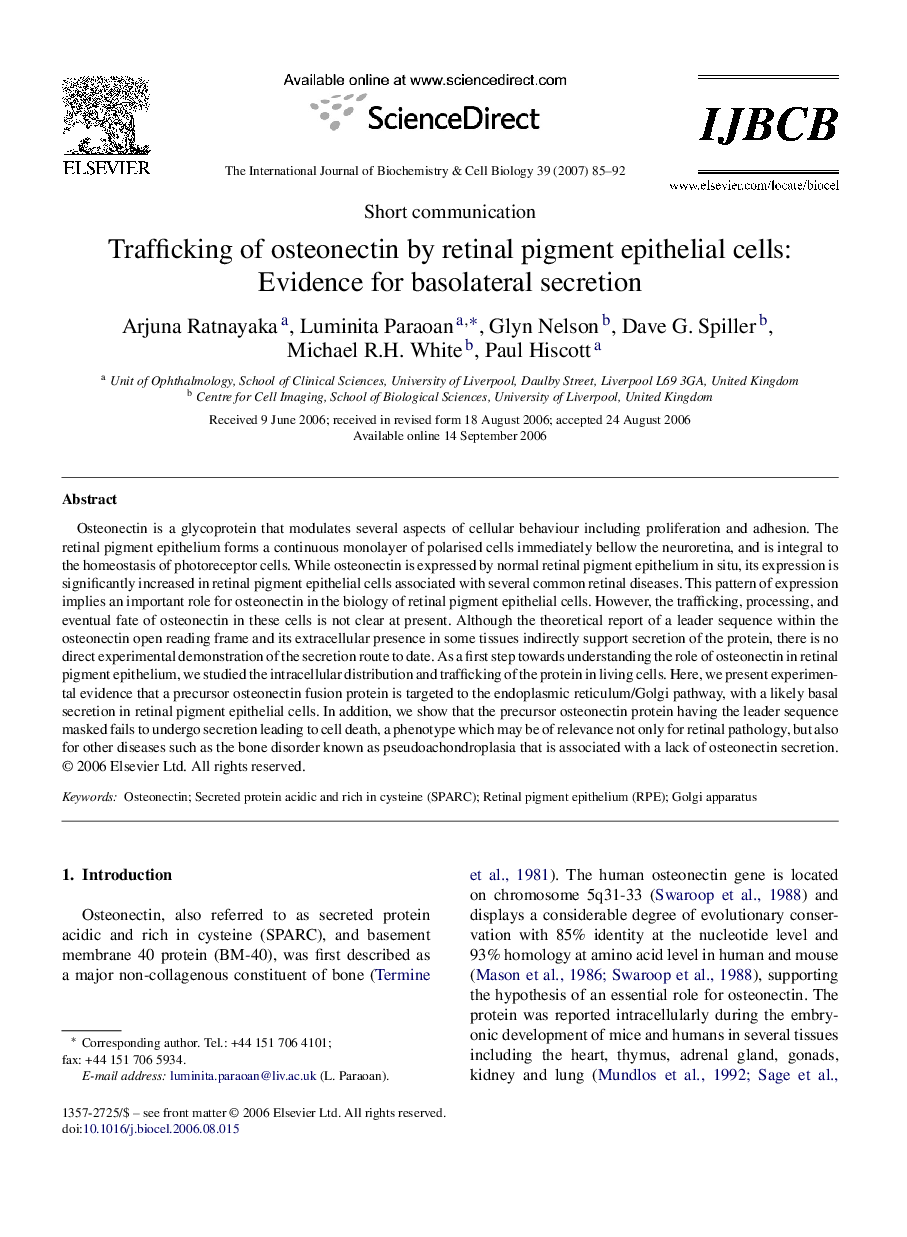| Article ID | Journal | Published Year | Pages | File Type |
|---|---|---|---|---|
| 1985451 | The International Journal of Biochemistry & Cell Biology | 2007 | 8 Pages |
Abstract
Osteonectin is a glycoprotein that modulates several aspects of cellular behaviour including proliferation and adhesion. The retinal pigment epithelium forms a continuous monolayer of polarised cells immediately bellow the neuroretina, and is integral to the homeostasis of photoreceptor cells. While osteonectin is expressed by normal retinal pigment epithelium in situ, its expression is significantly increased in retinal pigment epithelial cells associated with several common retinal diseases. This pattern of expression implies an important role for osteonectin in the biology of retinal pigment epithelial cells. However, the trafficking, processing, and eventual fate of osteonectin in these cells is not clear at present. Although the theoretical report of a leader sequence within the osteonectin open reading frame and its extracellular presence in some tissues indirectly support secretion of the protein, there is no direct experimental demonstration of the secretion route to date. As a first step towards understanding the role of osteonectin in retinal pigment epithelium, we studied the intracellular distribution and trafficking of the protein in living cells. Here, we present experimental evidence that a precursor osteonectin fusion protein is targeted to the endoplasmic reticulum/Golgi pathway, with a likely basal secretion in retinal pigment epithelial cells. In addition, we show that the precursor osteonectin protein having the leader sequence masked fails to undergo secretion leading to cell death, a phenotype which may be of relevance not only for retinal pathology, but also for other diseases such as the bone disorder known as pseudoachondroplasia that is associated with a lack of osteonectin secretion.
Related Topics
Life Sciences
Biochemistry, Genetics and Molecular Biology
Biochemistry
Authors
Arjuna Ratnayaka, Luminita Paraoan, Glyn Nelson, Dave G. Spiller, Michael R.H. White, Paul Hiscott,
